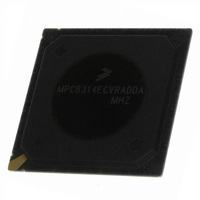MPC8314ECVRADDA Freescale Semiconductor, MPC8314ECVRADDA Datasheet - Page 67

MPC8314ECVRADDA
Manufacturer Part Number
MPC8314ECVRADDA
Description
MPU POWERQUICC II PRO 620-PBGA
Manufacturer
Freescale Semiconductor
Datasheet
1.MPC8314VRADDA.pdf
(106 pages)
Specifications of MPC8314ECVRADDA
Processor Type
MPC83xx PowerQUICC II Pro 32-Bit
Speed
266MHz
Voltage
1V
Mounting Type
Surface Mount
Package / Case
620-PBGA
Processor Series
MPC8xxx
Core
e300
Data Bus Width
32 bit
Maximum Clock Frequency
50 MHz
Maximum Operating Temperature
+ 105 C
Mounting Style
SMD/SMT
Minimum Operating Temperature
- 40 C
Lead Free Status / RoHS Status
Lead free / RoHS Compliant
Features
-
Lead Free Status / Rohs Status
Lead free / RoHS Compliant
Available stocks
Company
Part Number
Manufacturer
Quantity
Price
Company:
Part Number:
MPC8314ECVRADDA
Manufacturer:
Freescale Semiconductor
Quantity:
135
Company:
Part Number:
MPC8314ECVRADDA
Manufacturer:
Freescale Semiconductor
Quantity:
10 000
16.5
The RX eye diagram in
Figure
measured with the compliance/test measurement load (see
eye diagram measured over a range of systems at the input receiver of any real PCI Express component.
The degraded eye diagram at the input Receiver is due to traces internal to the package as well as silicon
parasitic characteristics which cause the real PCI Express component to vary in impedance from the
compliance/test measurement load. The input receiver eye diagram is implementation specific and is not
specified. RX component designer should provide additional margin to adequately compensate for the
degraded minimum Receiver eye diagram (shown in
adequate combination of system simulations and the return loss measured looking into the RX package
Freescale Semiconductor
Total Skew
Notes:
1. No test load is necessarily associated with this value.
2. Specified at the measurement point and measured over any 250 consecutive UIs. The test load in
3. A T
4. The receiver input impedance shall result in a differential return loss greater than or equal to 15 dB with the D+ line biased to
5. Impedance during all LTSSM states. When transitioning from a fundamental reset to detect (the initial state of the LTSSM)
6. The RX DC common mode impedance that exists when no power is present or fundamental reset is asserted. This helps
7. It is recommended that the recovered TX UI is calculated using all edges in the 3500 consecutive UI interval with a fit algorithm
as the RX device when taking measurements (also refer to the receiver compliance eye diagram shown in
clocks to the RX and TX are not derived from the same reference clock, the TX UI recovered from 3500 consecutive UI must
be used as a reference for the eye diagram.
interconnect collected any 250 consecutive UIs. The T
in which the median and the maximum deviation from the median is less than half of the total. UI jitter budget collected over
any 250 consecutive TX UIs. It should be noted that the median is not the same as the mean. The jitter median describes
the point in time where the number of jitter points on either side is approximately equal as opposed to the averaged time
value. If the clocks to the RX and TX are not derived from the same reference clock, the TX UI recovered from 3500
consecutive UI must be used as the reference for the eye diagram.
300 mV and the D– line biased to –300 mV and a common mode return loss greater than or equal to 6 dB (no bias required)
over a frequency range of 50 MHz to 1.25 GHz. This input impedance requirement applies to all valid input levels. The
reference impedance for return loss measurements for is 50 Ω to ground for both the D+ and D– line (that is, as measured
by a vector network analyzer with 50-Ω probes, see
loss measurement.
there is a 5 ms transition time before receiver termination values must be met on all unconfigured lanes of a port.
ensure that the receiver detect circuit does not falsely assume a receiver is powered on when it is not. This term must be
measured at 300 mV above the RX ground.
using a minimization merit function. Least squares and median deviation fits have worked well with experimental and
simulated data.
RX-EYE
Parameter
51) in place of any real PCI Express RX component. In general, the minimum receiver eye diagram
Receiver Compliance Eye Diagrams
= 0.40 UI provides for a total sum of 0.60 UI deterministic and random jitter budget for the transmitter and
MPC8314E PowerQUICC
Table 55. Differential Receiver (RX) Input Specifications (continued)
Figure 50
L
Symbol
RX-SKEW
is specified using the passive compliance/test measurement load (see
™
Skew across all lanes on a
Link. This includes variation in
the length of SKP ordered set
(e.g. COM and one to five
SKP Symbols) at the RX as
well as any delay differences
arising from the interconnect
itself.
II Pro Processor Hardware Specifications, Rev. 0
Figure
RX-EYE-MEDIAN-to-MAX-JITTER
Comments
51). Note that the series capacitors, C
Figure
Figure
50) expected at the input receiver based on an
51) is larger than the minimum receiver
Min
—
specification ensures a jitter distribution
Typical
—
TX
Figure 51
, is optional for the return
Max
20
Figure
Units
should be used
ns
PCI Express
50). If the
Notes
—
67











